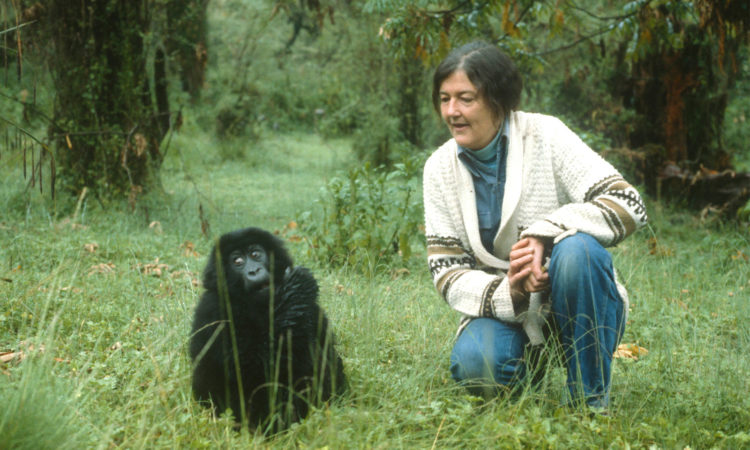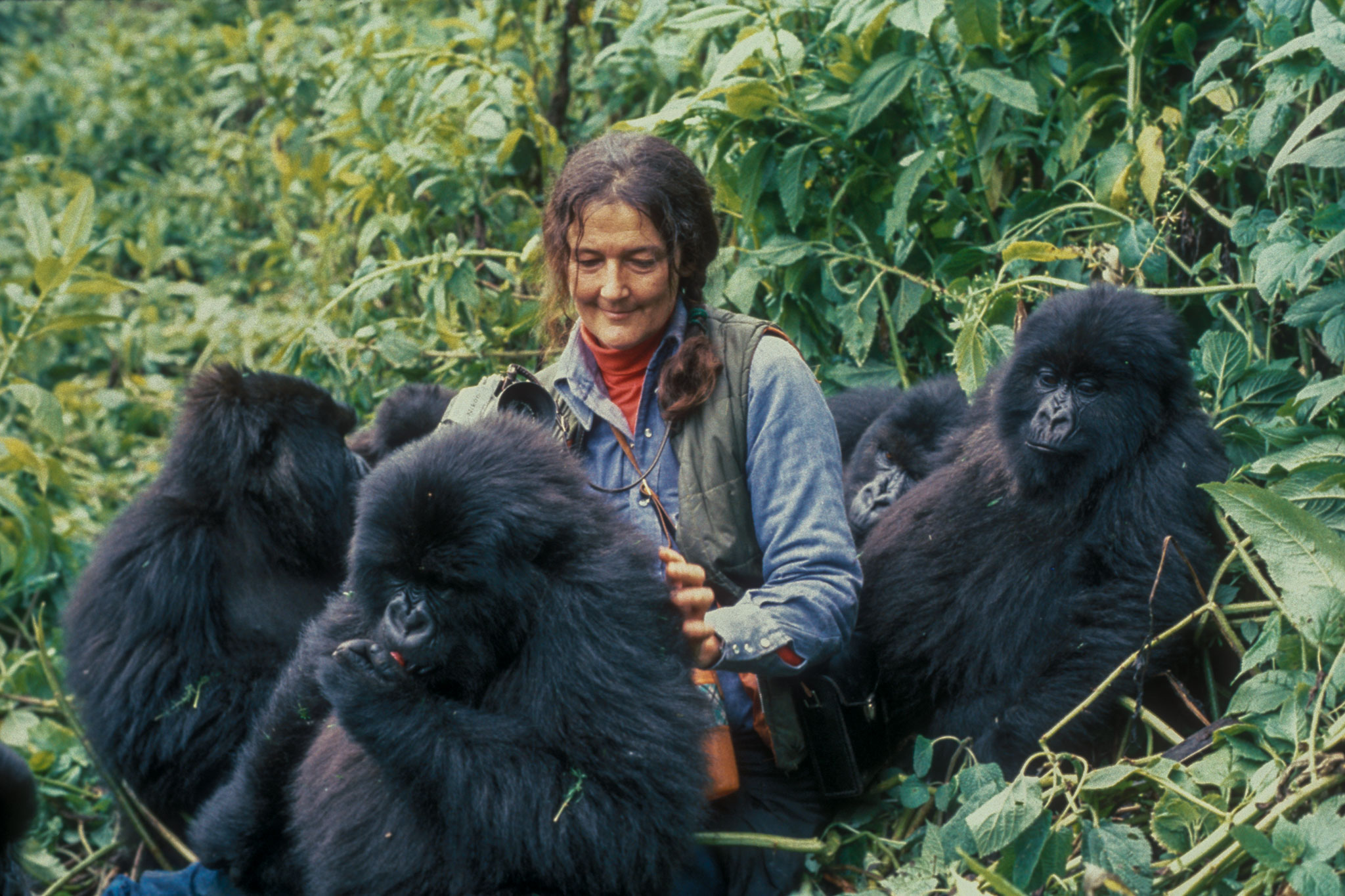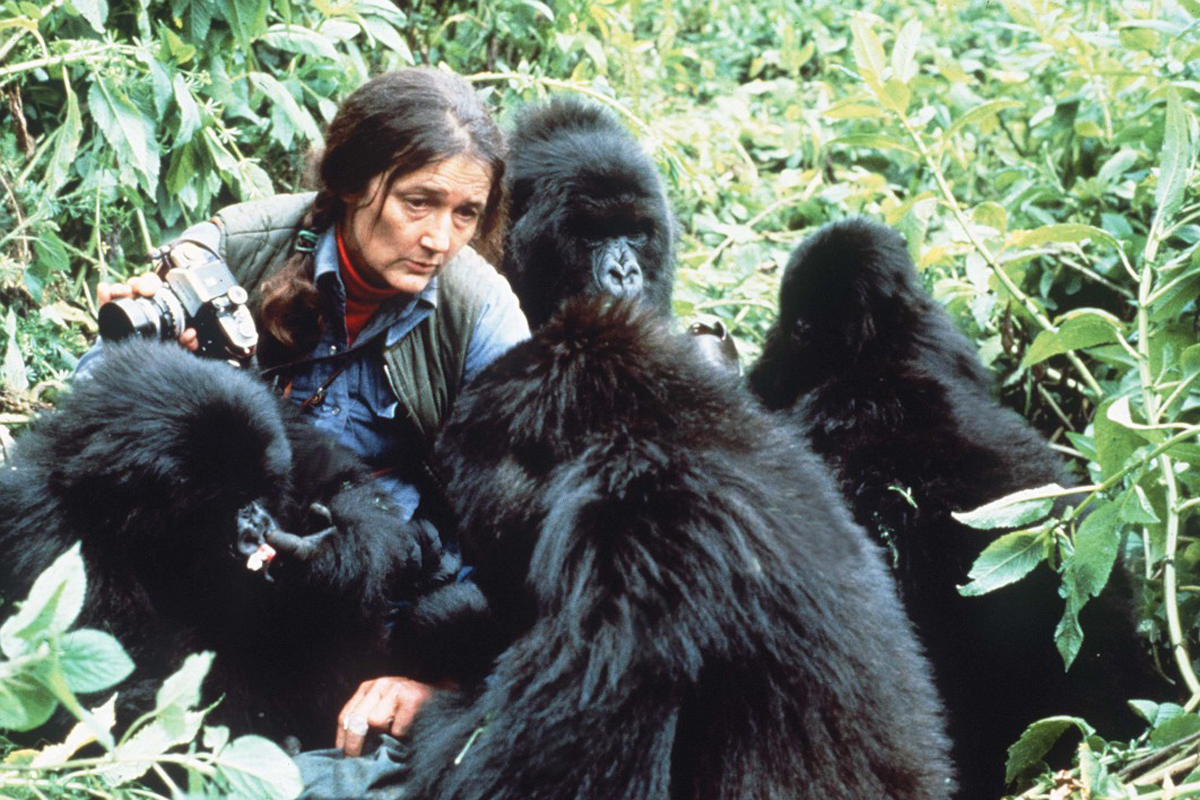
Dian Fossey in Africa
Dian Fossey in Africa
Dian Fossey returned to Africa to head out to the Congo with a passion to study the mountain gorillas of the region. It was in the month of October 1966 that Dian Fossey first encountered the mountain gorillas. Dian Fossey connected via Uganda and stayed at a small hotel in Kisoro called the Travelers Rest which is still functional today but rather budget. The hotel owner was a known gorilla conservation advocate and this was majorly because he saw the potential value of tourism for the community.
Her first visit was with other Kenyan photographers Joan and Alan Root who had been collecting footage of these gentle giants. They went into the forest on of the days and this was when Dian Fossey was to lay her eyes on the mountain gorillas and study them.
Dian Fossey later made her way to the Virunga mountains and spent a longer time in Africa while she stayed with friends of hers in Rhodesia. She later returned back home to her old join at the Kosair Children’s hospital as she was still paying off the loan for her first visit to Africa as she kept looking forward to her return to Africa.

Dian Fossey stays in the Congo;
Dian Fossey made her way to the Congo the then Zaire accompanied by Alan Root who was familiar with Africa, helped her acquire the permits to carry out her work and research in the Virunga. Alan even helped her hire two African men to accompany her and help out with the work and before he left, he shared with her the basics about gorilla tracking. Alan left her at Kabara where she was to start working alone.
Her destiny with the mountain gorillas showed up on her first day of gorilla tracking, only after walking 10 minutes, she came across a lone male gorilla and this even gave her more hope for her research. She joined hands with an experienced gorilla tracker called Senkwekwe for the next sightings.
Dian Fossey settled in a 7 by 10 foot tent in Kabara that was her new home with a bedroom, bathroom, office and laundry room where she would try to dry her clothes in this rain forest. She mainly ate tinned food but there was an option for meals to be prepared in an old building. She restocked her pantry on a monthly basis from the Kibumba village.
Senkwekwe continued to aid Dian with all the possible information she may need about these gorillas and tracking them and with this knowledge she identified three gorilla families around her study area which was at the slopes of the Mount Mikeno. She kept trying to habituate these gorillas to her presence but they always shied away. Her habituating process took longer than anticipated but she was patient about it.

The political situation in DR Congo/ Zaire was not the best and on July 9th 1967 after one their habituating sessions, Dian and Senkwekwe found a team of armed soldiers waiting for them with an aim to safely escort them to safety. She spent about 2 weeks in Rumangabo until she bribed her way out of the camp and back to Kisoro where she was warned against returning.
Dian Fossey stays in Rwanda;
Dian left Kisoro and headed to Kigali Rwanda and was able to fly to Nairobi to meet with DR. Leakey who helped her get granted permission to continue her research on the Rwandan side of the Virungas, the now Volcanoes national park. In 1967, Dian founded the Karisoke research center named after the Mount Karisimbi and the Mount Bisoke where the camp was set up.
Dian continued with the knowledge she had gained from the stay in Zaire and was able to habituate 4 gorilla groups in 1968. During her stay in Rwanda, she filmed some of her work for the National Geographic Society. It was with these images that views and the fear of the mountain gorillas was changed and the gorillas were now looked at as gentle beings.
Dian as she collected data, she also started to notice the dangers of the thriving of these animals and their biggest threat were the humans; poachers and the cattle keepers. She tried to fight off the poachers and this was not well received among these people.
Dian Fossey breathed her last on December 27th 1985 after she was found lifeless in her cabin with machete in her head. Her works and research center is still evident and can be witnessed on a Rwanda safari.


